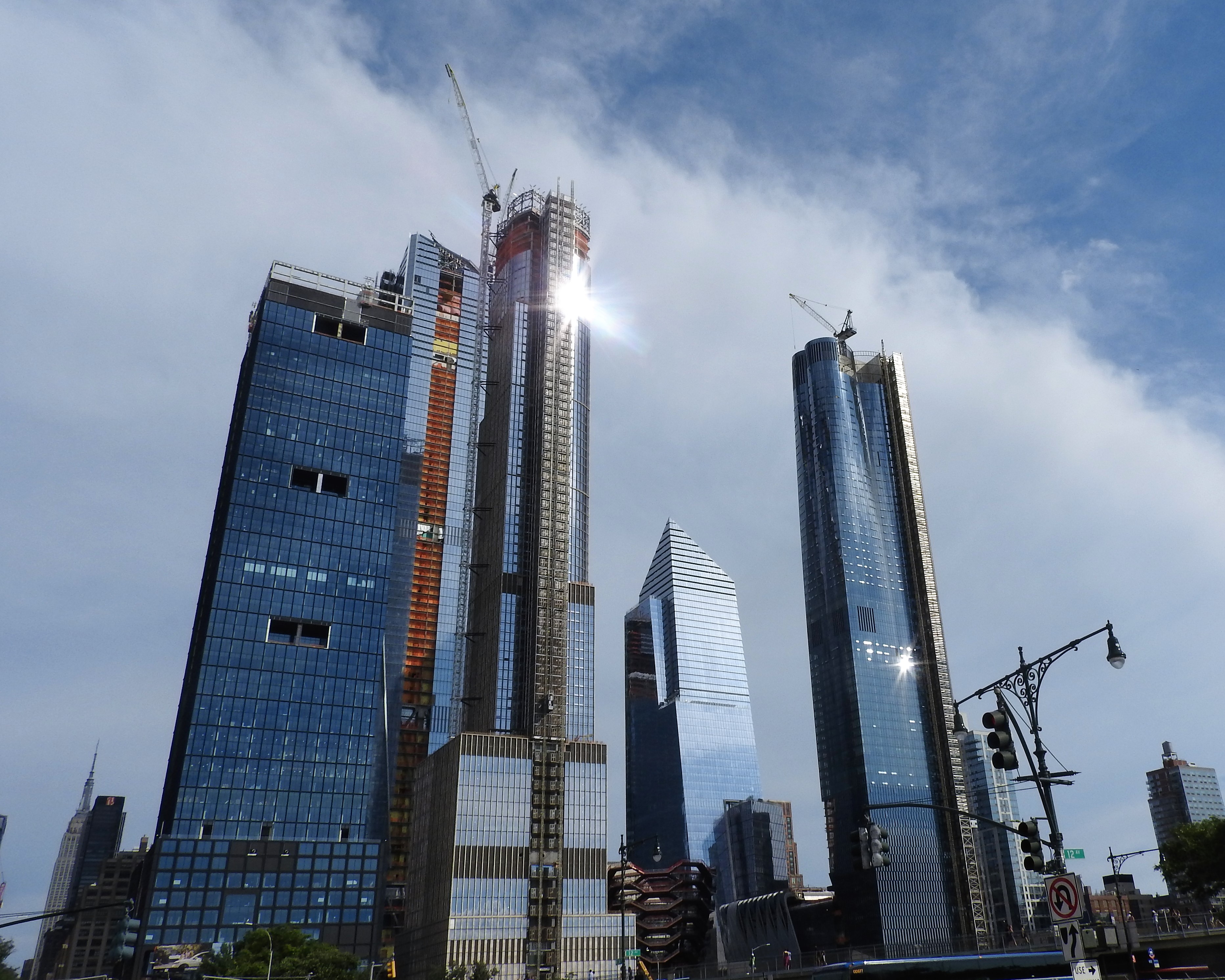You start out in 1954 by saying, "N****r, N****r, N****r." By 1968 you can't say "N****r"—that hurts you. Backfires. So you say stuff like forced busing, states' rights and all that stuff. You're getting so abstract now [that] you're talking about cutting taxes, and all these things you're talking about are totally economic things and a byproduct of them is [that] blacks get hurt worse than whites. And subconsciously maybe that is part of it. I'm not saying that. But I'm saying that if it is getting that abstract, and that coded, that we are doing away with the racial problem one way or the other. You follow me—because obviously sitting around saying, "We want to cut this," is much more abstract than even the busing thing, and a hell of a lot more abstract than "N****r, N****r."
- Lee Atwater
For those unfamiliar, this is a quote from Lee Atwater, a Republican political operative from the 1980s and one of the architects of the Southern Strategy. Thanks in part to his work, the once solidly Democratic South became a bastion of the Republican Party. It wasn't all him of course, and this process occurred before and after the 1980s. Nevertheless, this quote feels strangely relevant in light of the recent rise and fall of the phrase "Childless Cat Ladies."
In the past couple of months, it passed from J D. Vance's tradcath mouth into the memesphere and has largely dissipated. When the phrase still emerges, it is in an almost ironic context (like “deplorables” two elections ago). I have seen men appropriating it for themselves, and so-called CCLs in real life mentioning it for a laugh in bars. Good for them. But it is important to unpack how something like this could gain any kind of currency in the first place. Its present ridiculousness can obscure the potentially serious division the Right seeks to exploit in the future.
Returning to the Atwater quote, we may be at the N-word stage of the process the deceased operative outlined. The Childless Cat Lady occupies its place with gender swapped in for race. That is not to say the term is anywhere near offensive. Only that it is similarly clumsy, ridiculous, and to the detriment of reactionaries, obvious. It too easily reveals what they are appealing to. In Atwater's case, it was racism. For Childless Cat Ladies it is sexism. This campaign cycle, it has been to the benefit of liberals and others that such terminology was chosen. It gives them a good laugh and allows people like Vance and his ilk to be portrayed as "weird."
Well until the VP debate. Now it seems that "weird" has been put to rest. However, that other term, Childless Cat Ladies (which has its historical antecedents) may have its afterlife (or nine) too. Not in a literal sense. Rather, a sentiment behind it might provide a fertile ground for future reactionary politics to cultivate. That is why the phrase cannot be fully dismissed. Liberals and their coalition need to be vigilant. The sentiment in question is a resentment that could very well rear its head in more coded language. Echoes of “Childless Cat Ladies” reverberating through the campaign trails of the future.
And no, I won’t speculate on what those terms will be. I’m not going to help them. It must be remembered that resentment is the bread and butter of reactionary politicians. They are constantly sizing up society to find what might be bubbling under the surface and can be lanced for their benefit. The whole CCL nonsense is no different. It’s an attempt to explore and exploit tensions between the portion of women in this society who raise children, and those who do not. The distinction isn’t as clear as the phrase makes it out to be, but when has the Right ever allowed subtly, or reality to get in its way?
Obviously, throughout history not all women have had children (or children that survived infancy) but the numbers of women who decide to not pursue some form of motherhood (or guardianship) are higher today than ever before. Meanwhile the cost in terms of money and time for children keeps increasing and is also born more and more by the individual family unit, however it may be constructed.
(Despite the wide diversity in parenting structures, there’s little chance of the Right trying to appeal to them all. It’s why this essay is discussing things in terms of heterosexual cisgender women. This is in no way meant meant to ignore LGBT heads of households. But they occupy a different place in the discourses of Right-wing politics. In theory, transgender men with children could be celebrated by reactionaries as a way to put down CCLs. In practice they, along with others who do not conform to their supposed ideal, will merely be put down as an aberration who should not be allowed to have children in the first place. It’s another clue, among many, of how the Right isn’t actually interested in the welfare of children as an ends, but rather as a means to assert control and slot people into their “proper” place.)
Now is this particular resentment there? It is hard to imagine any useful polling that might shine a light on its dimensions. How widespread is the feeling, and how deep does it run for those who feel it? One might have a tinge of resentment for something but it might also not bother them much. But I think it's worth an educated guess to assert there's a strong potential for it.
In a healthy society that manages to be both empathetic and rational, there would be no conflict from those who have chosen one path over the other. Women who do not want to have children, would feel no pressure to do so, and not have their decisions over their body denigrated. They would have access to contraception, abortion, and the education to know how to use and access these options. Meanwhile, for those who choose to have children, they would have childcare, health care, flexible working situations, and affordable housing.
But America is far from being an empathetic country and its conception of rationality is stuck in the amber of 18th century metaphysics. In short, it is a country that makes it hard to be a mother, and is trying to make it equally hard to not be one either. In such a situation, it’s only natural for a reservoir of resentment to build up. In particular, those who have taken up the responsibilities of motherhood can begin to feel like they’re providing a valuable service for a society that ultimately turns its back on them.
This feeling is not going to be universal, because motherhood is not experienced the same by everyone. Some people are under more of a strain than others. The kinds of resources available vary widely. In many situations, women with children are directly supported by their relations and friends who don’t have them. Nevertheless, I don’t think it takes much of a stretch of the imagination to see the potential for a growing divide.
As with most cleavages, a politics of solidarity would bridge it. In their absence, the divide only grows. It’s a common enough process across all kinds of social struggles and contradictions. The divide begins in a gap between what people (in this case mothers) need versus what society provides for them. Then this divide moves, switching from a “vertical” focus to a “horizontal” one that strikes out against another group of people perceived to be contributing to the issue of inadequate provisions. In time, and with enough focus and ire, this division deepens until it becomes a trench in a culture war.
The last stage rarely happens spontaneously. It come about through a process of messaging that is both subtle and overt from reactionary forces. In this case, “Childless Cat Ladies,” is quite overt. It’s hard to think of anything that could be more on the nose. One would have to reach deep into the recess of old misogynistic lore to find it. Harridan? Maybe “Queen of the Harpies.” Yet as with CCL, these terms carry such a ridiculous, over-the-top quality that they easily become coopted into badges of merchandisable pride.
We could be become a society that supports both groups, along with all kinds of parents and guardians. To embrace a politics of family choice that would challenge the current the system of benefits and the present work-life balance. There’s no reason to raise up one group at the expense of the other, since both experiences overlap. Plenty of women make the decision to have and/or raise children at a later date in their lives. Others with children make the choice not to have any more. This blending and entwining of paths offers proofs that politics of resentment over who is and is not a mother is nowhere near inevitable.
Unfortunately, liberalism is inadequate in creating the politics that can diffuse tensions in society through material improvements. It has a grave-digging inability to grapple with the very concept of resentment, often confusing this feeling on the Right with the rage and revulsion expressed by the Left. Liberalism believes it is above recognizing such things. The ideology treats emotion in politics as a stain on what should be a sober calculation in the minds of the citizenry.
Which is why, when the champions of liberalism do try to get “emotional,” the attempts feel half-hearted and come off half-baked without about follow through. The “Politics of Joy” is only the latest attempt at trying to do liberalism with a human face. How quickly that seemed to fizzle out. 2024 isn’t 2008. A campaign of “Hope” or “Change,” is only sustainable when people believe actual material improvements are around the corner. When they fail to well, materialize, the collapse is hard. Both heart and mind feel betrayed.
Maybe the child/childless divide will not provide much fodder for the future Right. Reactionary forces might decide this line of attack is not worth pursuing and instead focus on cracking the African-American vote. They have been recently trying to do it by cultivating resentment against immigration. Or perhaps one day a clever operative will come along and they (and it could very well be a lady Atwater) will see the potential to seize on the underlying resentments I’ve previously outlined. The GOP has a problem with female voters and this might bring more of them into the Republican fold. Nothing helpful will be proposed or enacted. Just the cultivation of resentment with a little pandering rhetoric thrown in as a treat.
It will not lead to the kind of natalist policies the European Right proposes. Their Right was stitched to Capitalism in a shotgun wedding presided over by NATO after World War II. Meanwhile, our Right’s true love is Capitalism. High school sweethearts, who were Homecoming King and Queen. Our Right would hate to see support mostly going to non-White women as well. A story with a familiar refrain in this country. White Antebellum Americans were perfectly fine extolling the virtues of motherhood while selling the children of mothers they enslaved (and sometimes even fathered).
No, under this manifestation of resentment politics, mothers will be made to feel elite and “seen,” by punishing all the single ladies. Taking away abortion rights, restricting contraceptives, outlawing no-fault divorce, and censoring any information about this (one of the chief uses of obscenity laws in the past). Children will not receive any better healthcare; their mothers will be forced to work longer hours. The cats, more or less, will probably be fine.













































